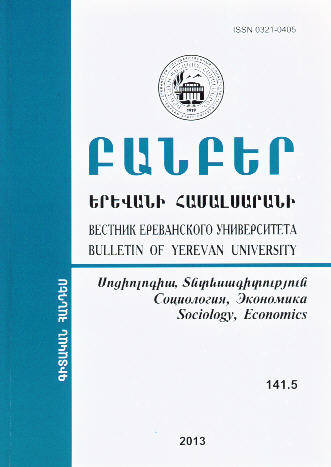Description of the Modern Conspicuous Consumption (on the Example of Yerevan City)
DOI:
https://doi.org/10.46991/BYSU:F/2013.4.3.003Abstract
Human mentality is changing and habitually involving new information and territory. On account of this societies are becoming wider and unlimited. Not developed and developing countries are trying to achieve developed countries. The reason of that process is the development of media: TV, radio, internet, etc. That is why the exploration of the conspicuous consumption development opportunities is so important. A sociological research, which was held in Yerevan, intended to describe the nature of conspicuous consumption and the facts that influence it. The typology of conspicuous consumption concerning different measures was created. Standards of technology, which includes stereotypic and comparable consumptions. 2. Customers’ behavior, which includes status, glamorous consumptions, and consumption which is directed to save and develop social communications. The uniqueness of conspicuous consumption is not limited in types of goods or services; it also depends upon the store or shop, where someone can get these goods or services and the location of the store. As a result of comparisons of different characters and categories of consumers and uniqueness of conspicuous consumption the consumers are included in 4 groups: economic, business, luxury, exclusive. One of the most obvious markers of this typology is the specific brand. In order to stimulate conspicuous consumption and make it more systematized and profitable, different organizations are using various technologies of public relations, branding and advertising. So it is obvious from the example of Yerevan City, that conspicuous consumption is a typical kind of consumption in Armenia.
Downloads
Published
How to Cite
Issue
Section
License
Copyright (c) 2013 Bulletin of Yerevan University

This work is licensed under a Creative Commons Attribution-NonCommercial 4.0 International License.








